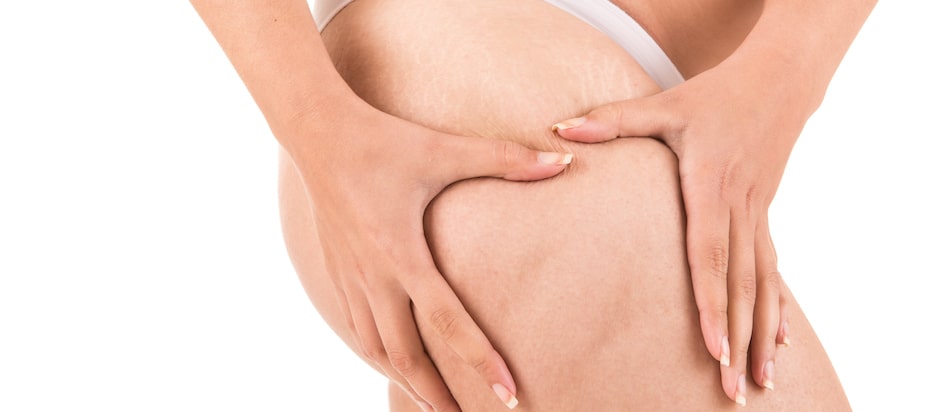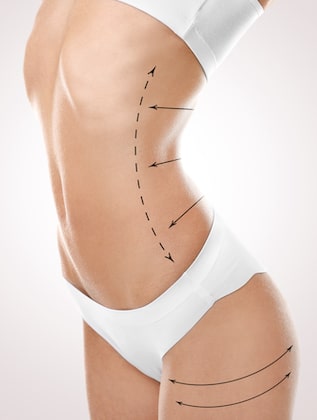
Liposuction is the removal of stubborn fat from various areas of the body, and it provides the skin in the treated area with a smoother and more contoured look. The performance of liposuction dates back to the start of the 20th century. Let’s take a look at how liposuction has evolved and improved over the years.
The first reported attempt of a doctor attempting to surgically sculpt fat traces back to Dr. Charles Dujarrier in 1921. The doctor was a French general surgeon who had a professional dancer as a patient and this person wanted to gain an improved look to the shape of her knees and ankles. Dr. Dujarrier performed an excision of excess skin and subcutaneous tissue from her calf but the results included the removal of too much tissue along with excessive tension in the closure. The patient also suffered from necrosis and had to undergo amputation. (FYI: This procedure also resulted in the first lawsuit ever related to plastic surgery). The doctor was condemned for his actions but he was later absolved after a court appeal because the surgery was done without the patient being charged for the procedure.
 The beginning of modern fat extraction surgery began about forty years ago when Josef Schrudde, a German physician, first published his technique that used a uterine curette for the purpose of removing subcutaneous fat. This techniques was used by several other physicians into the middle of the 1970s while also combining the treatment with aspiration in order to remove more fat. Some of the common liposuction complications at this time included skin necrosis, lymphorrhea, and excess skin in localized areas.
The beginning of modern fat extraction surgery began about forty years ago when Josef Schrudde, a German physician, first published his technique that used a uterine curette for the purpose of removing subcutaneous fat. This techniques was used by several other physicians into the middle of the 1970s while also combining the treatment with aspiration in order to remove more fat. Some of the common liposuction complications at this time included skin necrosis, lymphorrhea, and excess skin in localized areas.
Then, in 1977, a patient requested that a large lipoma be removed from the body without resulting in a scar. In order to perform this request, a doctor developed a blunt cannula technique with the goal of avoiding any of the serious complications that were associated in the past with lipoaspiration. The operation evolved into what was later referred to as the “wet” liposuction technique which allowed the patient to enjoy a minimal amount of blood loss. This pioneering technique of using a blunt cannula later became the global standard of care regarding the performance of liposuction.
At the start of the use of blunt-tipped cannulas on patients, some doctors had a choice of three different sizes of cannulas and the choice depended on the area of the body scheduled to be aspirated. A 10mm cannula was used for the flanks, hips, and buttocks while an 8mm cannula was often used on the ankles, abdomen, knees, and arms. In addition, a 5mm cannula was used on the face of the patient.
Liposuction was originally described as being a mechanized procedure where suction was achieved by aspiration done through a vacuum pump. On the other hand, modern cannulas are made, internally and externally, of zirconium which allows for a reduction in friction in both fat injection and fat aspiration.
Since 1995 (and on), advancements in techniques as well as instruments and devices have evolved liposuction to a new era of performance. The development of narrower and more advanced cannulas led to a trend of superficial lipoplasty where the surgeon was able to aspirate superficial fat to a depth of 3-4mm subdermal.
Along with the introduction of new instruments and “wet liposuction,” there have been other developments including ultrasound liposuction where mechanical oscillations and effects are passed through the cannula. In turn, the cannula emits waves from its tip to dissolve the fat. This liposuction technique also provides an improved preservation of vessels in the body. However, there is a chance of burns on the body following the treatment.
Laser assisted liposuction is when a laser beam causes the rupture of the adipocyte membrane which leads to the release of oily content into the extracellular fluid. In addition, microtunnels are created in the track of the laser beam and a coagulation of microvessels in the adipose tissue.
In the present day, traditional liposuction can be performed under general or local anesthesia. Tiny incisions are created in the targeted area of the body so the surgeon can insert a cannula into the incisions. The cannula is a suction tube that removes stubborn and excess fat from the body. The procedure can be performed on multiple areas of the body.
Patients need to know that liposuction is not performed to provide weight loss or an improved quality to the skin. Instead, it is performed to eliminate stubborn and hard to remove fat and give the treated area of the body an improved contour. The ideal candidate for liposuction should be within twenty-five pounds of their ideal weight, over the age of eighteen, and have a good amount of skin elasticity.
What does the future hold for liposuction patients and techniques? More than likely, additional improvements in the way it is performed and an even better overall look to the body for patients of all ages.
- MA